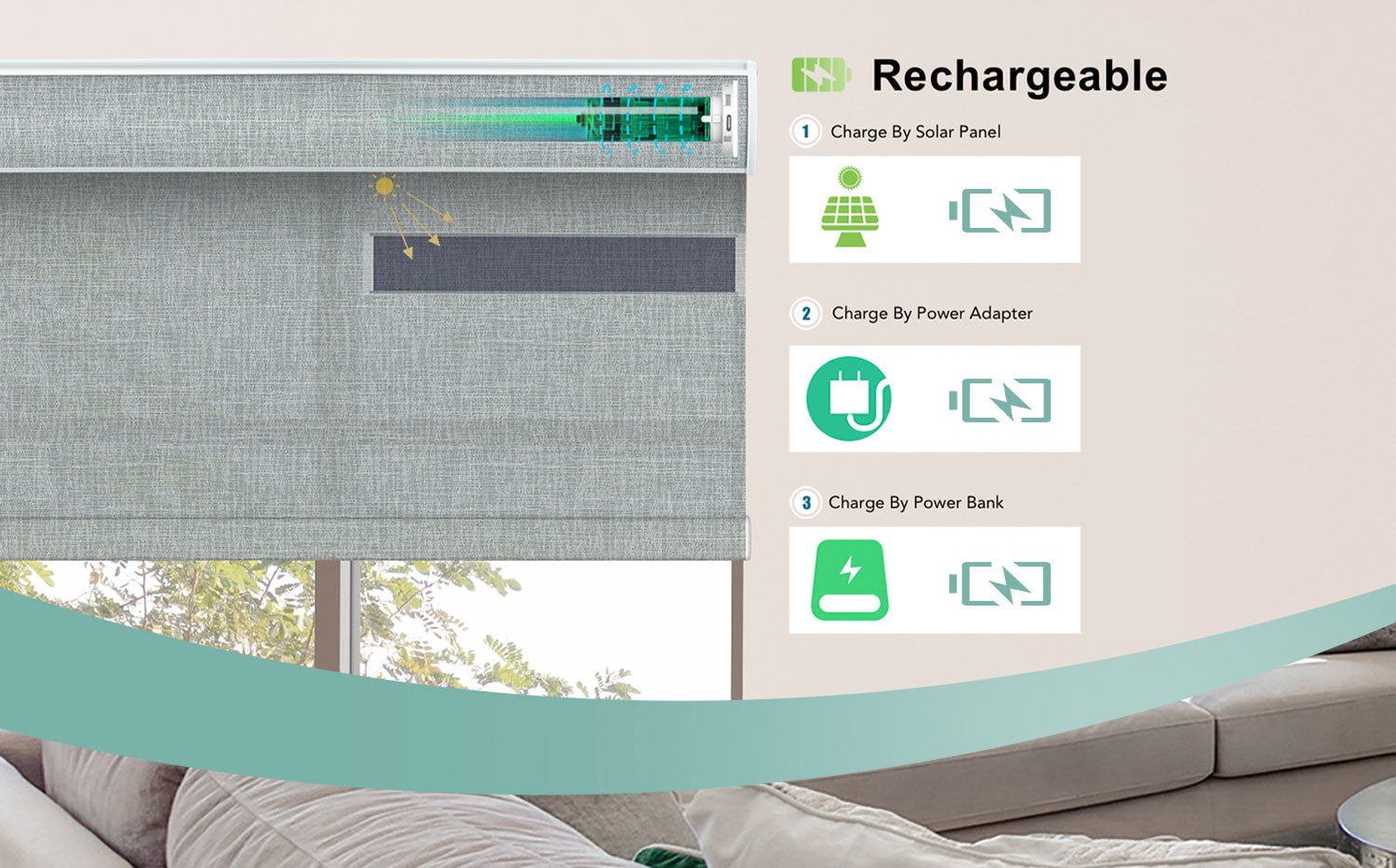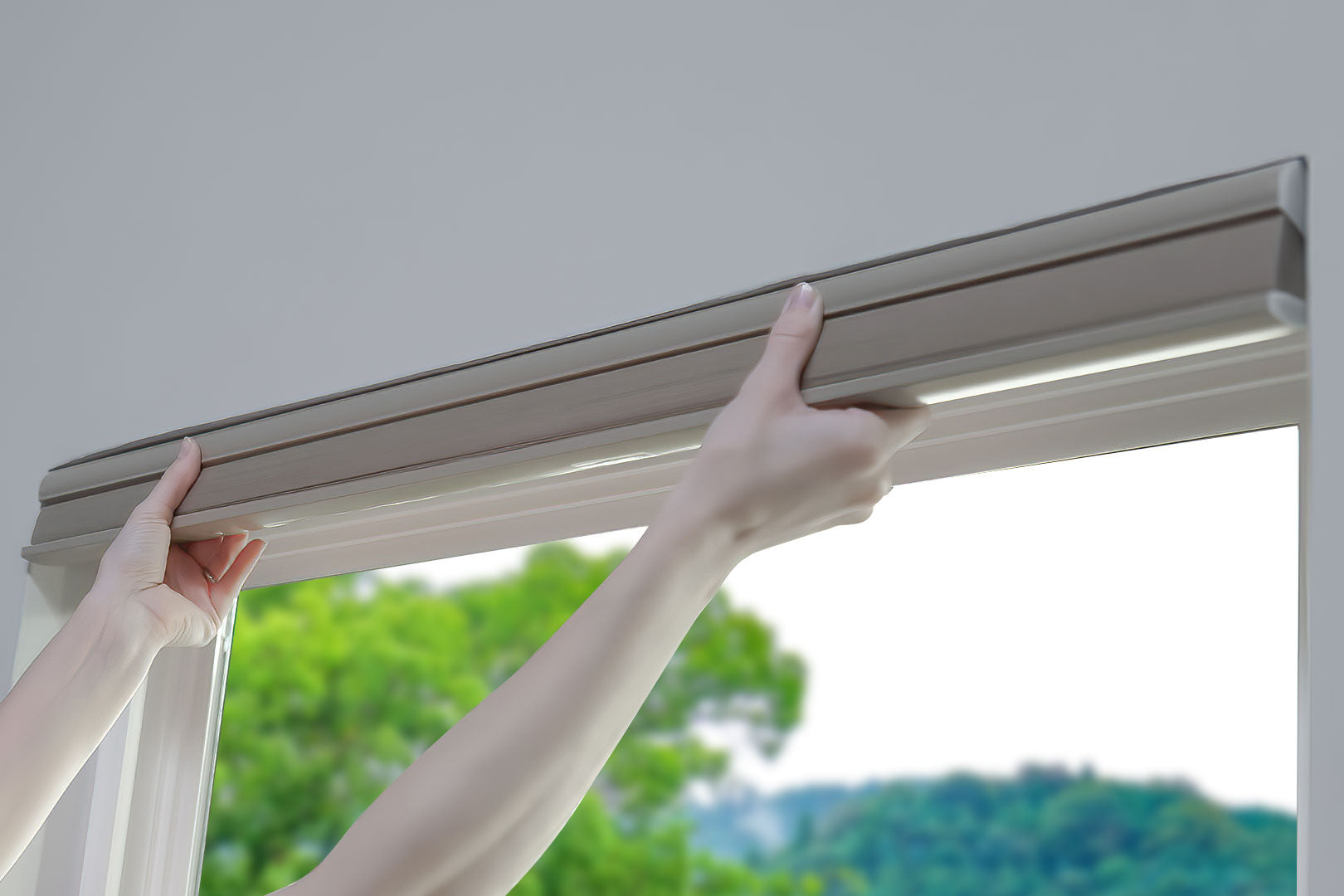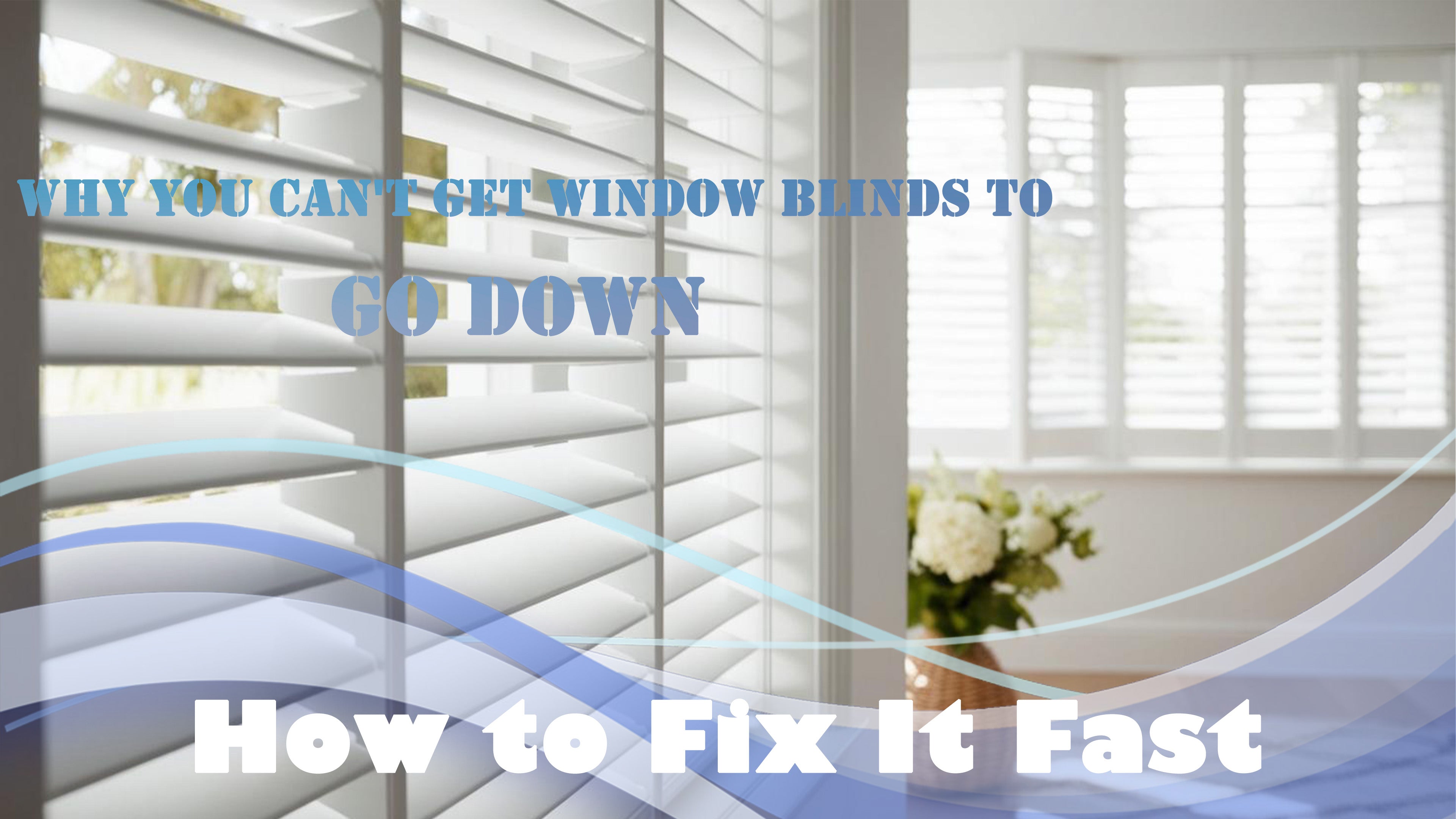
That infuriating moment: your window blinds refuse to come down. You pull, you twist, but they stay stubbornly stuck up top. Good news – the fix is often simpler than you think, and we'll show you exactly how to get things moving again.
Here’s what we cover:
● Common reasons blinds won't retract
● Easy DIY troubleshooting steps for stuck blinds
● How to identify if the mechanism is broken
● When replacing blinds is the best option
At BlindsMagic, we focus on reliable operation day in and day out. Our smart blinds offer smooth control, bypassing many common manual blind frustrations. We believe managing your light should be effortless.
Why Won't My Blinds Go Down?
So, your blinds are stuck. Again. Before you start yanking cords harder (please don't), let's figure out why they're putting up a fight. Pinpointing the cause makes the fix much easier and prevents accidental damage.
Here are the usual suspects keeping your blinds raised:
● The Cord Lock is Jammed: This small mechanism lives inside the headrail. Its job is to grip the cords and hold the blinds at your desired height. If it gets clogged with dust, the internal parts wear down, or the cords slip out of place, it simply won't release. This is probably the number one reason blinds refuse to lower.
● Frayed or Tangled Lift Cords: Run your fingers along the lift cords. Do you feel rough patches, knots, or thinning areas? Damaged cords create friction. They can easily snag within the headrail mechanism or guides, stopping movement completely.
● Slats Are Obstructed or Damaged: Look closely at the individual slats (especially on horizontal blinds). Are any bent, broken, or pushed out of alignment? Even one crooked slat can physically block the others, preventing the entire stack from lowering evenly or smoothly.
● Worn-Out Internal Parts: Let's face it, blinds work hard and don't last forever. Constant use wears down internal gears, springs, or plastic components. Eventually, something gives out or breaks internally.
Older blinds, particularly those relying solely on traditional cord locks and manual operation, often run into these snags over time. Newer systems, like some integrated into BlindsMagic's automated blinds, feature mechanisms engineered for durability and consistent, smooth operation. They frequently bypass these common manual failure points entirely.
Easy DIY Steps for Stuck Blinds

So, you have a likely suspect for why your blinds are stuck. Now, let's try some hands-on fixes. Remember to be gentle – forcing things usually makes it worse. Work slowly and observe how the blind responds.
Release a Jammed Cord Lock
This trick works wonders when the locking mechanism itself is just being stubborn. It's often the quickest fix for corded blinds.
1. Grasp all lift cords together evenly, close to the headrail. Keep them reasonably taut.
2. Pull the cords straight down gently. This action ensures the blind's weight is fully supported by the cords before you try to release the lock.
3. Now, while maintaining downward tension, pull the cords horizontally towards the center of the blind. Aim for roughly a 45-degree angle away from the vertical edge. You might hear or feel a faint click as the lock disengages.
4. Slowly relax the sideways pull, guiding the cords back towards their normal vertical position. Do not just let go.
5. Attempt to lower the blinds smoothly. If it doesn't work the first time, repeat the process, perhaps trying to pull horizontally towards the outside edge instead.
Sometimes simple dust buildup causes the lock to stick. If you can safely see into the cord lock area in the headrail, a quick puff of compressed air might dislodge loose debris. Avoid spraying lubricants directly into the lock unless the manufacturer specifically suggests it; the wrong kind can attract more dirt over time.
Untangle Cords and Check Alignment
Twisted, knotted, or snagged cords are frequent offenders. A little patience here goes a long way.
1. Visually inspect the lift cords carefully. Follow them from the headrail down to the bottom rail or tassels, looking for obvious knots or twists.
2. Gently work out any tangles using just your fingers. Avoid pulling hard on knots, which can tighten them. Try to carefully loosen the loops.
3. Ensure the cords run freely through any guide loops on the blinds or wall, and through the tassels or end caps. They shouldn't be wrapped around each other or caught on edges.
4. If your blinds have multiple lift cords, check if they have become unevenly tensioned (one hanging lower than the others). Sometimes, fully raising the blind slowly can help reset them before you try lowering again.
Adjust Uneven or Obstructed Slats
If one or more slats are out of alignment, especially on horizontal blinds, they can physically block the stack from lowering.
1. Lower the blinds just a little if you can, or work from the position where they are stuck.
2. Scan across the slats. Look for any that are clearly bent, have popped out of their ladder cord guides, or are sitting crooked compared to the others.
3. Gently try to nudge or reseat the problematic slat back into its proper position. Use minimal force; if a slat feels truly broken or jammed tight, don't force it and risk more damage.
4. Also, double-check the window sill and the sides of the frame for any objects that might be physically blocking the blind's path downward.
While these DIY steps often solve temporary glitches, constantly battling stuck blinds gets old fast. If you find yourself frequently wrestling with the cords, or if the mechanism feels gritty and worn despite your efforts, it might signal deeper wear. Modern solutions, like BlindsMagic's smart blinds, eliminate these cord-related hassles entirely, offering simple push-button or automated control for reliable operation.
Signs Your Blind Mechanism is Broken
You've patiently tried the troubleshooting steps, but the blinds still aren't cooperating. Sometimes, the problem runs deeper than a simple jam or tangled cord. Internal parts wear out or break, and recognizing these signs can save you further frustration and wasted effort.
Look and listen closely for these tell-tale clues:
● Grinding or Loud Clicking: Hear unusual noises coming directly from the headrail when you try to operate the blinds? Sharp clicks (beyond the normal lock sound) or grinding often signal stripped gears or broken plastic pieces inside the mechanism itself.
● Limp Cords or Wand: Does the pull cord feel completely slack, offering zero resistance when you pull? Or does twisting the tilt wand spin freely without engaging the slats? This usually indicates a disconnected linkage or broken part internally. The connection is severed.
● Visible Damage: Inspect the headrail casing for obvious cracks, especially near where the cords enter. Check the cords right at the entry point – severe fraying or tearing there suggests significant internal friction or breakage. Broken tassels might also mean cords have ripped out under strain.
● Constant Re-Jamming: You manage to release the cord lock or untangle a cord, but the blind immediately jams again in the exact same way. If a temporary fix doesn't hold even once, the component itself is likely worn beyond simple adjustment.
● Blind Crashes Down / Won't Stay Up: While our main issue here is blinds not going down, the opposite problem is a dead giveaway. If your blind suddenly refuses to stay raised and crashes down unexpectedly, the locking mechanism has completely failed.
Hearing grinding noises or dealing with cords that go completely limp are strong signals you're past a quick fix. At this stage, trying further repairs on an old or worn mechanism often isn't worth the headache. One broken part can indicate others are nearing failure too.
Considering an upgrade to a modern system, like options from BlindsMagic, provides a fresh start with reliable components. These often include warranties and smart features designed to prevent these common mechanical breakdowns from happening in the first place.
Knowing When to Replace Your Blinds

Sometimes, you have to know when to fold 'em. While DIY fixes handle many minor issues, there comes a point where replacing your blinds is simply the smarter, more efficient choice. Wrestling with a truly worn-out or significantly broken blind isn't usually a good use of your time or money.
Consider opting for replacement if you recognize these situations:
● Major Mechanism Failure: As we covered, serious grinding noises, completely limp cords, or a locking mechanism that totally gives way often mean the internal workings are beyond simple repair. Sourcing specific parts and attempting complex fixes can be costly and might not even last long.
● Significant Visible Damage: Are numerous slats badly warped, cracked, severely discolored, or even missing? Are the main cords extensively frayed or thinning? Damage that drastically affects both the look and the basic function of the blind makes replacement a very reasonable choice.
● Old Age & Recurring Issues: If your blinds have seen many seasons and you find yourself constantly fixing different problems (not just the same one), it's likely time. Materials degrade, plastics become brittle, and fighting ongoing battles with aging blinds gets tiring fast.
● Desire for an Upgrade: Your needs or style might have changed. Maybe the current blinds look dated, don't provide enough light blockage, or you're simply ready for modern convenience. Replacement is the perfect opportunity to choose features that better suit your home today.
● Cord Safety Concerns: Older blinds often have long, dangling cords. These can pose entanglement risks, particularly for households with young children or curious pets. Replacing dated corded styles with safer cordless or motorized alternatives significantly improves home safety.
Choosing to replace opens the door to worthwhile upgrades, moving beyond basic functionality. Instead of just getting another standard blind potentially prone to the same old problems down the road, explore modern solutions.
BlindsMagic provides options featuring seamless smart home integration for effortless control, advanced scheduling capabilities for energy savings, and materials certified for environmental friendliness (like OEKO-TEX and GreenGuard). Many of our designs also enhance safety by eliminating hazardous external cords, offering convenience and peace of mind.
Stop Fighting Stuck Blinds with BlindsMagic
Dealing with stubborn window blinds is frustrating, but now you can spot the likely cause and attempt simple fixes yourself. Sometimes, recognizing when repair isn't the best path forward is the real solution.
Keep these key points in mind:
● First, pinpoint the reason your blinds are stuck (cord lock, tangles, slats, wear).
● Try gentle DIY adjustments like releasing the lock, untangling cords, or checking slats.
● Listen and look for clear signs indicating a truly broken internal mechanism.
● Consider replacement when repairs become too frequent, costly, or the blind is simply worn out.
If you're ready to leave the troubleshooting cycle behind, explore the reliability BlindsMagic offers. Our smart designs focus on smooth, long-lasting operation, giving you effortless control over light and privacy without the common jams and snags found in older mechanisms.
Frequently Asked Questions
How do you fix a blind that won't go down?
First, try gently pulling all the lift cords straight down together, then pull them sideways (horizontally) toward the center of the blind. This often releases the internal cord lock. Also visually check for tangled cords or any slats that look jammed or crooked.
Why won't my window blinds roll down?
The most frequent reasons include a stuck cord lock mechanism within the headrail, lift cords that have become tangled, frayed, or jumped off their track, or horizontal slats that are bent, broken, or misaligned, blocking movement. Simple wear and tear on internal parts is also common in older blinds.
How do you get blinds to drop down?
The main technique involves releasing the locking mechanism. Hold the lift cords so they are taut, pull down slightly first, then pull them horizontally (around 45 degrees) toward the middle of the window frame. You might feel or hear a small click. Then, gently guide the cords back toward vertical as you lower the blind.
Why are my pull down blinds not pulling down?
Most often, the issue is the cord lock failing to release properly or the lift cords snagging somewhere along their path inside the mechanism or guides. Carefully inspect the cords for damage or knots, and try the standard side-pull method (pulling cords horizontally) to release the lock. If these problems happen repeatedly, the mechanism might be worn; modern blind designs often prevent these specific snags.



















